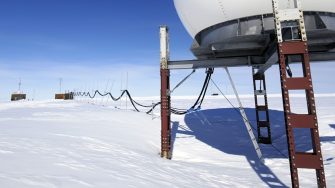
Astronomy from Antarctica
Project ID: 143
Supervisor(s): Michael Ashley
Michael's research interests centre around astronomy from Antarctica. This includes the design and construction of instrumentation for use in Antarctica, and in the analysis of data collected by the instruments. See https://mcba1.phys.unsw.edu.au/~plato-a/ and https://mcba1.phys.unsw.edu.au/~plato-r/
Recently acquired data requiring analysis include:
- Michael is a member of the Gattini-IR team conducting a near-infrared all-sky survey from Mt Palomar Observatory in California. The detector is a HAWAII-2RG array that has a number of interesting non-linearities that need calibrating. The same technology detectors are used in NASA's JWST space telescope, and our work in understanding the detector will have relevance to JWST.
- Near-infrared spectra of the Antarctic sky, to quantify the effects of airglow and aurorae on astronomical measurements.
- Some 15 terabytes of optical images from the AST3-2 telescope were obtained in 2019. There is interesting work to be done in calibrating the images and developing a data reduction pipeline for precision photometry and astrometry. The images can be used for the detection of supernovae, exo-solar planets, and variable stars. There are also some high-speed (millisecond exposure times) images that can be used to study the astronomical seeing in Antarctica.
On the instrumentation side:
- The NISM near-infrared photometer was returned to UNSW from Antarctica in 2019. The instrument needs a series of calibration tests.
The image below shows the HEAT terahertz telescope at Ridge A in Antarctica. HEAT operated for 4 years until 2016. The person behind the instrument is Dr Craig Kulesa from the University of Arizona. UNSW PhD student Matthew Freeman visited Ridge A with Dr Kulesa in 2014, and UNSW research assistant Geoffrey Chen spent 10 days at Ridge A in 2019.
